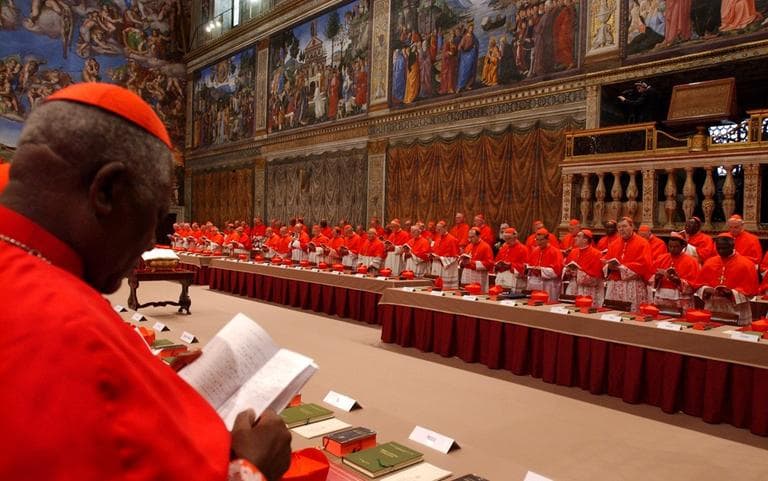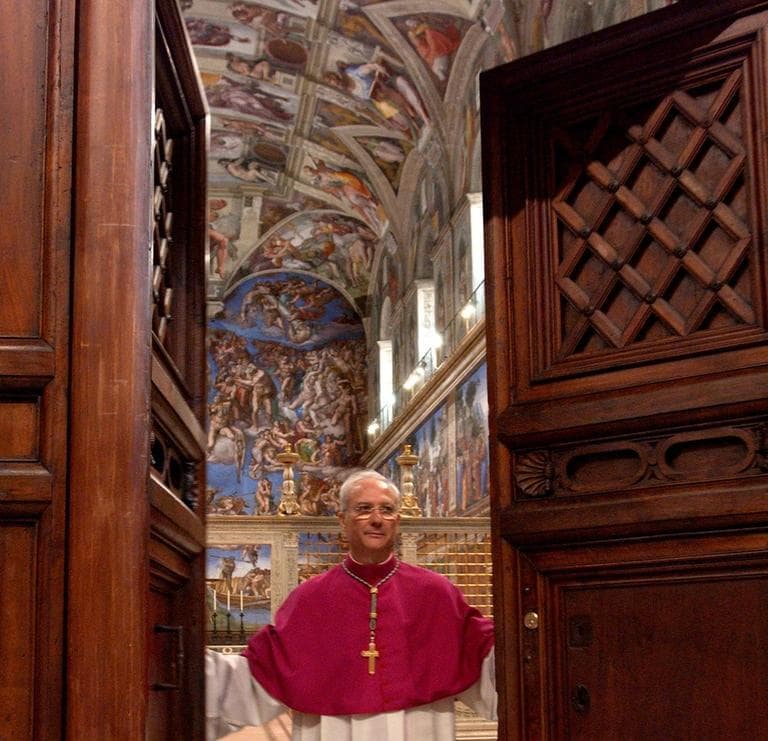Advertisement
How Secure Are The Votes For Pope?
Resume

Roman Catholic cardinals from around the world have gathered inside the Vatican for their first meetings before the conclave to elect the next pope.
Each cardinal will take an oath of secrecy, and the conclave preparations include clearing out and debugging the Vatican hotel and Sistine Chapel.
But in this age of concerns about rigged elections and information leaks, how secure are the votes for pope?
Bruce Schneier is an author and a security expert. He mainly specializes in cryptology and Internet security, but has taken a look at the papal voting system.
He says that the papal voting process, while complicated, is pretty secure.
Here are the steps of the process, as reported by Catholic News Service:
- Each vote begins with the preparation and distribution of paper ballots by two masters of ceremonies, who are among a handful of noncardinals allowed into the chapel at the start of the session.
- Nine voting cardinals are chosen at random: three to serve as "scrutineers," or voting judges; three to collect the votes of any sick cardinals who remain in their quarters; and three "revisers" who check the work of the scrutineers.
- After all the noncardinals have left the chapel, the cardinals fill out their ballots secretly, legibly and fold them twice. Any ballots from sick cardinals are collected and brought back to the chapel.
- Each cardinal walks to the altar, holding up his folded ballot so it can be seen. He places his ballot on a plate and then slides it into a receptacle, traditionally a large chalice.
- When all the ballots have been cast, the first scrutineer shakes the receptacle to mix them. He then transfers the ballots to a new urn, counting them to make sure they correspond to the number of electors.
- The ballots are read out. Each of the three scrutineers examines each ballot, with the last scrutineer calling out the name on the ballot, so all the cardinals can record the tally. The last scrutineer pierces each ballot with a needle and places it on a thread, so they can be secured.
- The votes are counted to see if someone has obtained a two-thirds majority needed for election - or a simple majority if the rules are changed later in the conclave. The revisers then double-check the work of the scrutineers for possible mistakes.
- Any handwritten notes made by the cardinals during the vote are collected for burning with the ballots. If the first vote of the morning or evening session is inconclusive, a second vote normally follows immediately, and the ballots from both votes are burned together at the end.
- When a pope is elected, the ballots are burned immediately. By tradition, the ballots are burned dry - or with chemical additives - to produce white smoke when a pope has been elected; they are burned with damp straw or other chemicals to produce black smoke when the voting has been inconclusive.
The main security threat to the papal voting process is not voter fraud, rather information leaks, Schneier said.
Pope Emeritus Benedict XVI has threatened to ex-communicate any cardinal who breaks his oath of secrecy.
Guest:
- Bruce Schneier, author and security expert.
This segment aired on March 4, 2013.